The Thermal Features

With half of the earth’s geothermal features, Yellowstone holds the planet’s most diverse and intact collection of geysers, hot springs, mudpots, and fumaroles. Its more than 300 geysers make up two thirds of all those found on earth. Combine this with more than 10,000 thermal features comprised of brilliantly colored hot springs, bubbling mudpots, and steaming fumaroles, and you have a place like no other.
The Wildlife
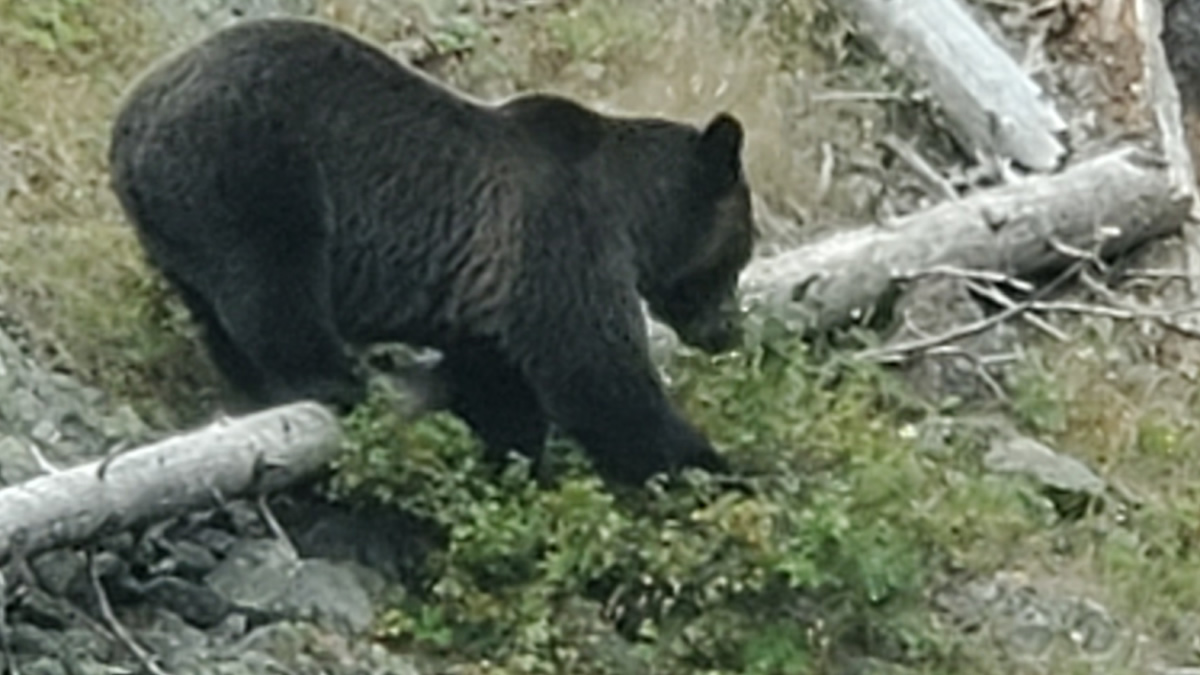
Yellowstone is home to a myriad of wildlife. Animals you may see in the park include grizzly bear, black bear, wolves, elk, deer, moose, antelope, bighorn sheep, bison, mountain goats and many other species. The avian wildlife in Yellowstone National Park includes bald eagles, swan, pelicans, cormorants and more. Bring your binoculars!
The Seasons
Plowing begins in early March. Depending on weather, the first stretches of road to open to motor vehicles include Mammoth-Norris, Norris-Madison, and West Yellowstone-Old Faithful; these roads open in mid-April. Roads on the east and south sides of the park, including East and South Entrances, typically open in early May. So plan accordingly. In the summer park roads are generally open for travel. Summer is the season when most people visit the park enjoying the warm weather and full access to the park. During the fall the elk bugle and the crowds dissipate. The Fall is an excellent time to visit the park if you don’t mind the colder temperatures and chances for snow. For the adventurous souls the winter is a magical time to visit Yellowstone. Stay in the Snow Lodge near Old Faithful and enjoy cross county skiing, snowmobiling and snow shoeing. In the winter season travel is limited to snowmobile and snowcoach. Make sure you make reservations in advance if you plan to visit during the winter.
Lodging - Yellowstone
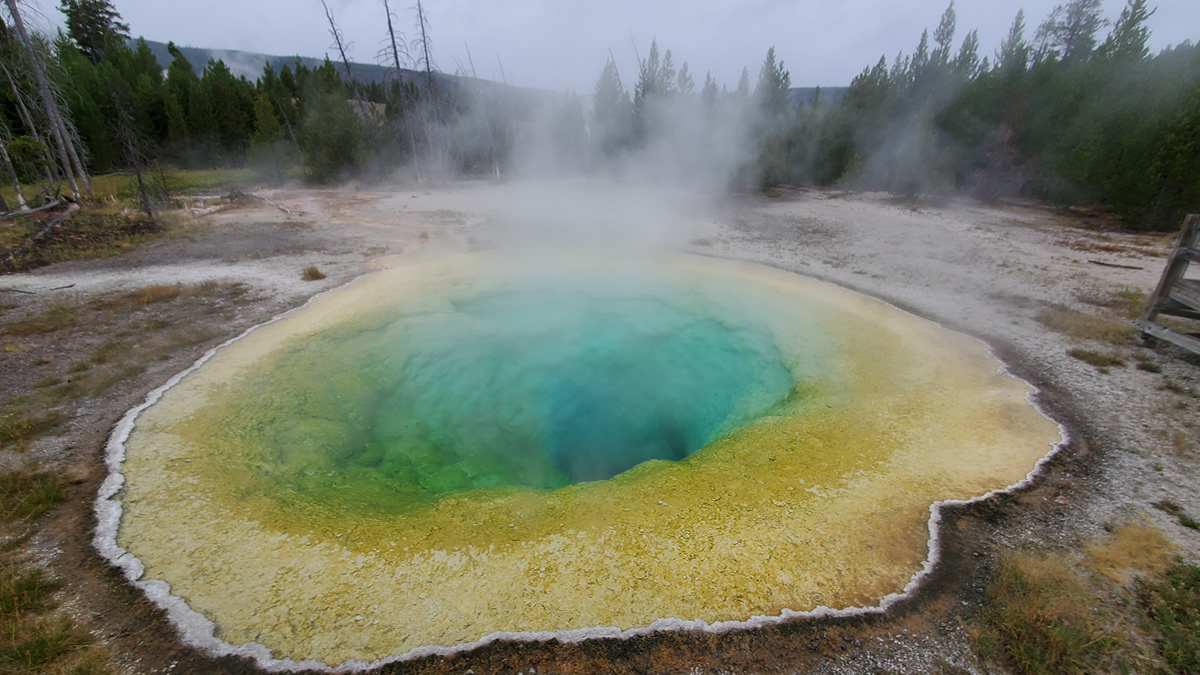
Canyon Lodge & Cabins
Located near the renowned Grand Canyon of the Yellowstone and its Lower Falls, the Canyon Lodge is the most central of the park's 9 locations. It's ideal for hiking and other outdoor activities. Cabins built in the 1950's and 60's are arranged on loops, while two new lodges house over 80 hotel style rooms. All rooms and cabins have private baths.
Grant Village
Grant Village, named after president Ulysses S. Grant who signed the law which established Yellowstone as the world's first national park, was completed in 1984. The lodging complex includes 6 two-story buildings each containing 50 rooms. The village is situated on the southwestern shore of Yellowstone Lake, approximately 20 miles from Old Faithful, and is the nearest location to Grand Teton National Park.
Lake Lodge
Lake Lodge is an inviting location where cozy cabins and cafeteria style dining provide a family-friendly atmosphere. The main lodge houses a delightful lobby where two fireplaces, a lounge and gift store warmly beckon guests to linger and chat. Cabins with private baths are grouped nearby.
Lake Yellowstone Hotel
Lake Yellowstone Hotel was completed in 1891 and restored to its 1920's grandeur in 1990. The majestic hotel sits on the shore of Yellowstone Lake and is listed on the Register of Historic Places. The serenity of Yellowstone Lake illuminates through the "Sun Room" windows, as guests daydream to the delicate sounds of a string quartet in the lobby.
Mammoth Hot Springs Hotel – open during the winter
In the early days, Yellowstone's visitors began their park exploration at Mammoth Hot Springs, named after the steaming limestone terraces just above the hotel area. Today, Mammoth Hot Springs Hotel offers a warm welcome to summer and winter visitors.
Old Faithful Inn
As a national historic landmark, Old Faithful Inn is the most requested lodging facility in the park. The rustic-style lodge, with log and wood shingle exterior is located adjacent to the world famous Old Faithful Geyser.
Old Faithful Lodge Cabins
This historic cabin facility is located near Old Faithful Inn and includes a one-story main lodge built in the 1920's featuring massive logs and stone pillars. The lobby and food court (with cafeteria and bakery) offers tremendous views of the Old Faithful Geyser.
Old Faithful Snow Lodge & Cabins – open during the winter
Completed in 1999, the Snow Lodge is the newest of the park's full service hotels. Accommodations include lodge rooms, Western Cabins and Frontier Cabins. The interior features include furnishings, fixtures and appointments that carry creative wildlife and park themes. A full service dining room, quick service "Geyser Grill" and charming Bear Den Gift Store round out the impressive amenities at Old Faithful Snow Lodge.
Roosevelt Lodge Cabins
Named for Yellowstone enthusiast Theodore Roosevelt who regularly visited the park, this rustic log lodge and cabin facility was built in in an area of the park that was a favorite of Theodore Roosevelt. The rustic cabins and family style dining are a favorite of families and fisherman alike.
Must See In Yellowstone
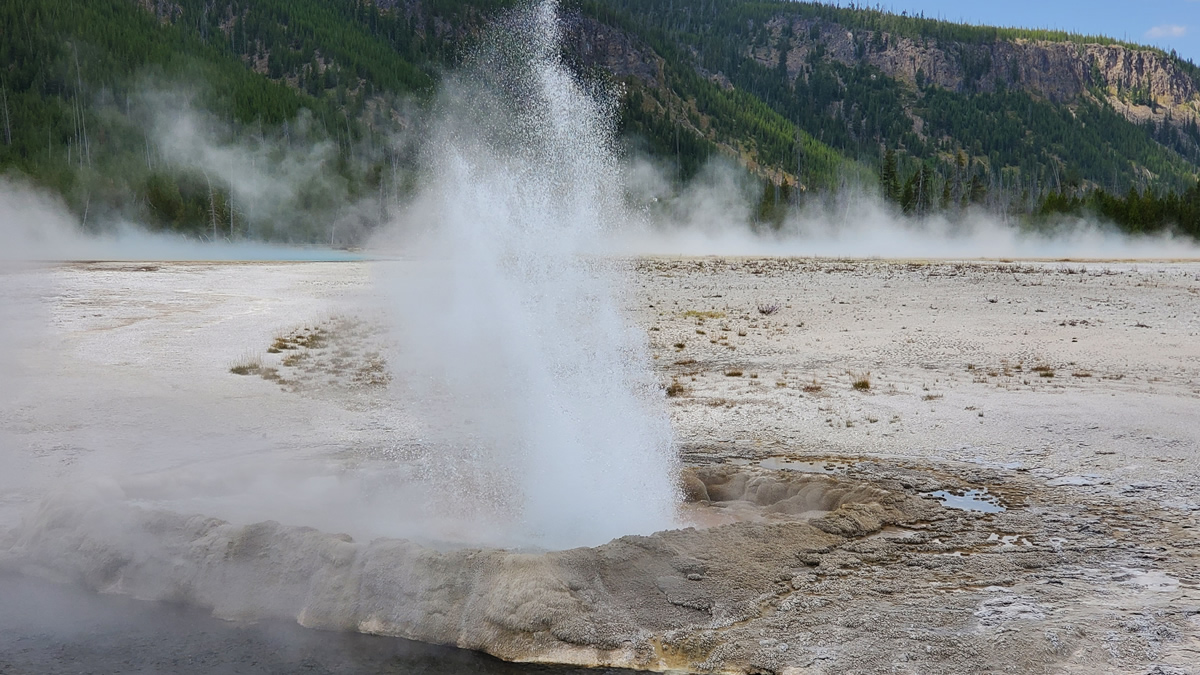
Geyser Basin
Take one of the short loop trails giving visitors a good chance of seeing a variety of geysers, from the ever-entertaining Anemone with its short intervals of 5-10 minutes to the impressive Beehive with its unpredictable eruptions reaching 100-150 feet! Numerous other combination loops or one-way walks can be chosen in the Upper Geyser Basin. Features such as Castle, Grand, Riverside, and Daisy geysers along with Morning Glory Pool are easily accessed using the Old Faithful self-guiding trail map. Details on geyser prediction times may be obtained by stopping by the visitor center.
The Upper and Lower Falls of the Yellowstone
The falls are erosional features formed by the Yellowstone River as it flows over progressively softer, less resistant rock. The Upper Falls is upstream of the Lower Falls and is 109 ft. high. It can be seen from the Brink of the Upper Falls Trail and from Uncle Tom's Trail.
Mt. Washburn
Mt. Washburn is the main peak in the Washburn Range, rising 10,243 ft. above the west side of the canyon. It is the remnant of volcanic activity that took place long before the formation of the present canyon. It is an excellent example of subalpine habitat and is very accessible to the average visitor. Bighorn sheep and an abundance of wildflowers can be found on its slopes in the summer.
Hayden Valley
Hayden Valley is one of the best places in the park to view a wide variety of wildlife. It is an excellent place to look for grizzly bears, particularly in the spring and early summer when they may be preying upon newborn bison and elk calves. Large herds of bison may be viewed in the spring, early summer, and during the fall rut, which usually begins late July to early August.
Yellowstone Lake
With a surface area of 132 square miles, Yellowstone Lake is the largest lake at high elevation (i.e., more than 7,000 ft.) in North America. It is a natural lake, situated at 7,733 ft. above sea level. It is roughly 20 miles long and 14 miles wide with 141 miles of shoreline.
Yellowstone Road Trips
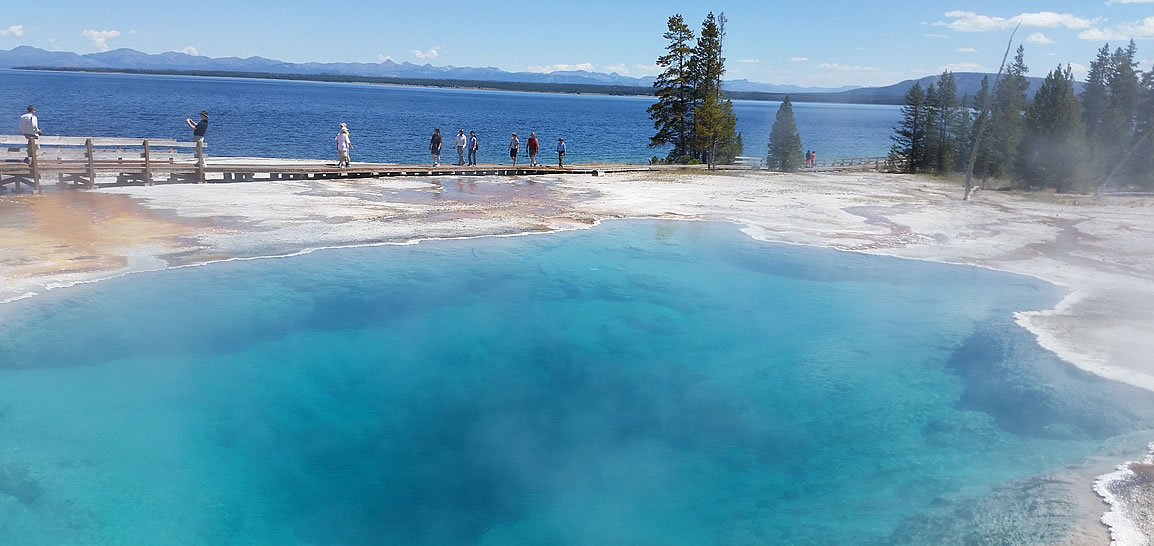
3 Fun Routes to Yellowstone
Wyoming’s most famous destination is Yellowstone National Park, located in the northwestern most part of the state. Carbon County Wyoming is a magical corridor to visit on your way our nation’s first National Park. Check out the fun and scenic routes we have mapped out for your convenience from various Carbon County cities to Yellowstone National Park.




